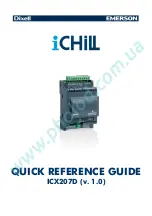
RX610 Group
20. Serial Communications Interface (SCI)
R01UH0032EJ0120 Rev.1.20
Page 673 of 1006
Feb 20, 2013
20.6.2
Interrupts in Smart Card Interface Mode
Table 20.16 lists interrupt sources in smart card interface mode. A transmit end interrupt (TEI) request cannot be used in
this mode.
Table 20.16 SCI Interrupt Sources
Name
Interrupt Source
Interrupt Flag
DTC Activation
DMAC Activation
Priority
ERI
Receive error or error signal detection ORER, PER, or ERS
Not possible
Not possible
High
RXI
Receive data full
Possible
Possible
TXI
Transmit data empty
TEND
Possible
Possible
Low
Data transmission/reception using the DTC or DMAC is also possible in smart card interface mode, similar to in the
normal SCI mode. In transmission, when the SSR.TEND flag is set to 1, a TXI interrupt request is generated. This TXI
interrupt request activates the DTC or DMAC allowing transfer of transmit data if the TXI request is specified
beforehand as a source of DTC or DMAC activation. The TEND flag is automatically cleared to 0 when the DTC or
DMAC transfers the data.
If an error occurs, the SCI automatically re-transmits the same data. During the retransmission, the TEND flag is kept to
0 and the DTC or DMAC is not activated. Therefore, the SCI and DTC or DMAC automatically transmit the specified
number of bytes, including retransmission in the case of error occurrence. However, the ERS flag in SSR is not
automatically cleared to 0 at error occurrence. Therefore, the ERS flag must be cleared by previously setting the RIE bit
in SCR to 1 to enable an ERI interrupt request to be generated at error occurrence.
When transmitting/receiving data using the DTC or DMAC, be sure to make settings to enable the DTC or DMAC before
making SCI settings. For DTC or DMAC settings, see section 12, DMA Controller (DMAC) and section 13, Data
Transfer Controller (DTC).
In reception, an RXI interrupt request is generated when receive data is set to RDR. This RXI interrupt request activates
the DTC or DMAC allowing transfer of receive data if the RXI request is specified beforehand as a source of DTC or
DMAC activation. If an error occurs, the error flag is set. Therefore, the DTC or DMAC is not activated and an ERI
interrupt request is issued to the CPU instead; the error flag must be cleared.
















































